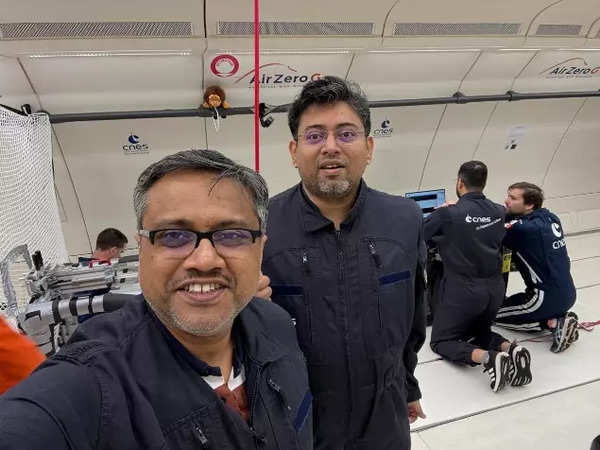
BENGALURU: Two Indian scientists, in collaboration with French scientistshave conducted microgravity experiments that could advance the ability to fabricate materials in space, studying droplet behaviour during the 68th CNES (french space agency) parabolic flight campaign.
The findings could potentially contribute to future applications including fabricating organs, space bricks, electronics, diagnostic kits and surface patterning in extraterrestrial environments.
Professors Saptarshi Basu and Aloke Kumar from the Indian Institute of Science (IISc) along with David Brutin, the principal investigator and RC Remmy from AIX Marseille University participated in the campaign, which involved 10 experiments aboard a ZeroG flight designed to simulate microgravity conditions.
“We embarked on this effort of bio printing in spacewhich involves a bottom-up approach whereby droplets of desired materials are deposited on substrates in 3D printing mode. This experiment allows insightful science into fundamental issues like wetting of droplets on substrates under zero gravity,” Basu told TOI from France.

Prof Saptrishi Basu & Prof Aloke Kumar inside the aircraft ahead of the parabolic flight
The team’s experimental setup — contained in a compact 7kg box housing cameras, LED light sources, a blower, syringe pump, computer and timing units — was manually deployed during microgravity phases lasting 10-15 seconds. During these brief windows, the researchers injected droplets onto various substrates and recorded their spreading and wetting behaviour using high-speed cameras.
According to Basu, the research is “tailored towards better understanding of the challenges that will ultimately result in bio printing in space towards sustainable habitat.”
The campaign involved an aircraft performing 93 parabolic manoeuvres over three days. During each parabola, passengers experienced 22 seconds of microgravity, preceded and followed by 20-second phases of hyper-gravity where they were subjected to approximately 1.8 times Earth’s gravity.
Gaining approval for such experiments involved a rigorous process. “The experimental design and plan had to be pre-approved and certified by Novespace and CNES. The proposal was first shared and presented before a technical panel at least one year in advance of the proposed flight date,” Basu explained.
After initial approval, researchers conducted ground-based experiments before packaging their setup in a compact, automated fashion weighing no more than 10kg. All aspects of the experiment — operating conditions, instruments, power requirements and fluids used — underwent multiple rounds of vetting by Novespace (a subsidiary of CNES), with safety protocols being particularly stringent.
Basu described the experience as a “wild adventure of hyper and microgravity” that yielded “new physical insights into droplet physics under zeroG.” He stressed that from both technical and scientific perspectives, their experiment allows a paradigm shift in human knowledge and technology advances.






